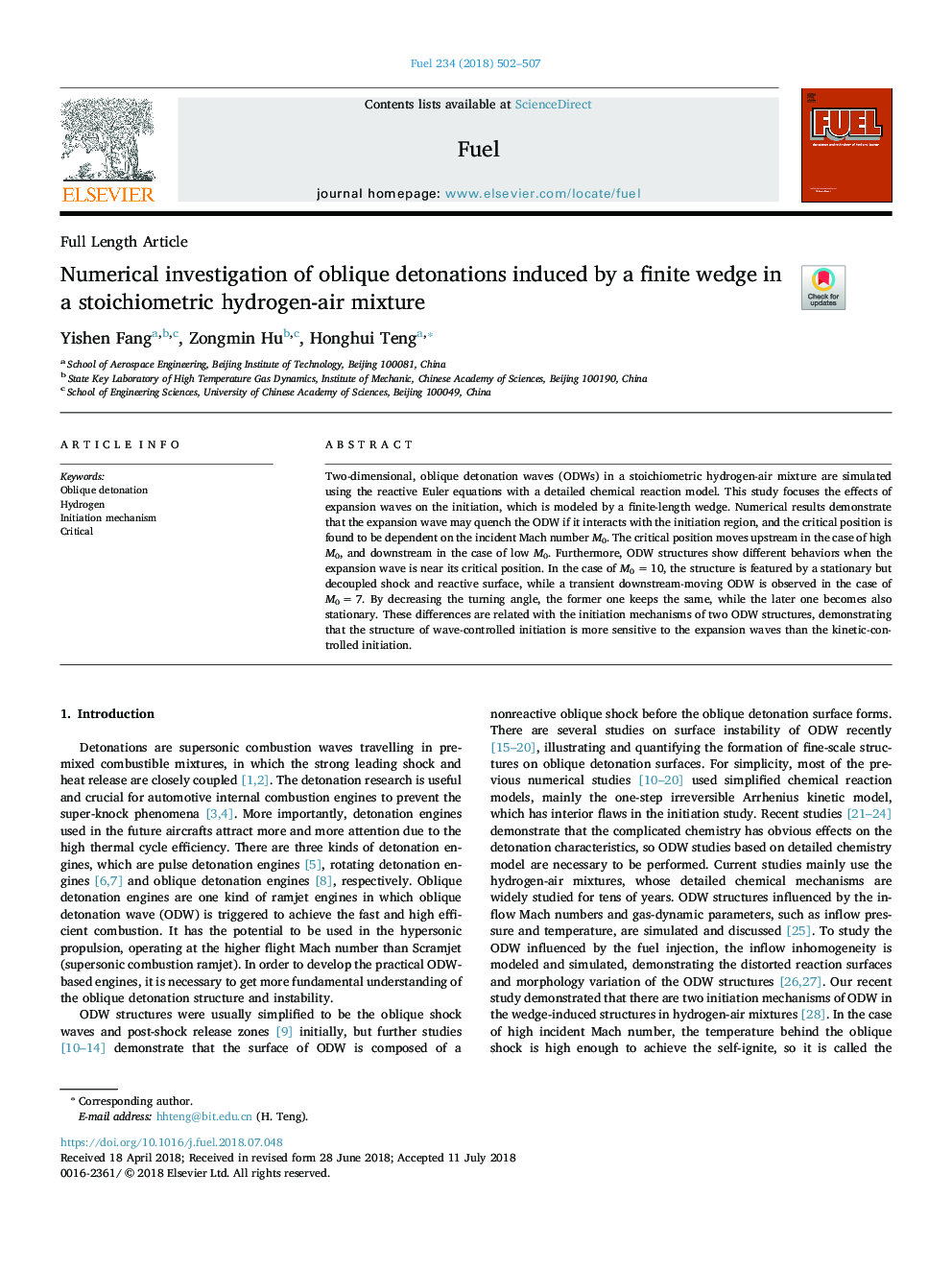| Article ID | Journal | Published Year | Pages | File Type |
|---|---|---|---|---|
| 6630056 | Fuel | 2018 | 6 Pages |
Abstract
Two-dimensional, oblique detonation waves (ODWs) in a stoichiometric hydrogen-air mixture are simulated using the reactive Euler equations with a detailed chemical reaction model. This study focuses the effects of expansion waves on the initiation, which is modeled by a finite-length wedge. Numerical results demonstrate that the expansion wave may quench the ODW if it interacts with the initiation region, and the critical position is found to be dependent on the incident Mach number M0. The critical position moves upstream in the case of high M0, and downstream in the case of low M0. Furthermore, ODW structures show different behaviors when the expansion wave is near its critical position. In the case of M0â¯=â¯10, the structure is featured by a stationary but decoupled shock and reactive surface, while a transient downstream-moving ODW is observed in the case of M0â¯=â¯7. By decreasing the turning angle, the former one keeps the same, while the later one becomes also stationary. These differences are related with the initiation mechanisms of two ODW structures, demonstrating that the structure of wave-controlled initiation is more sensitive to the expansion waves than the kinetic-controlled initiation.
Keywords
Related Topics
Physical Sciences and Engineering
Chemical Engineering
Chemical Engineering (General)
Authors
Yishen Fang, Zongmin Hu, Honghui Teng,
